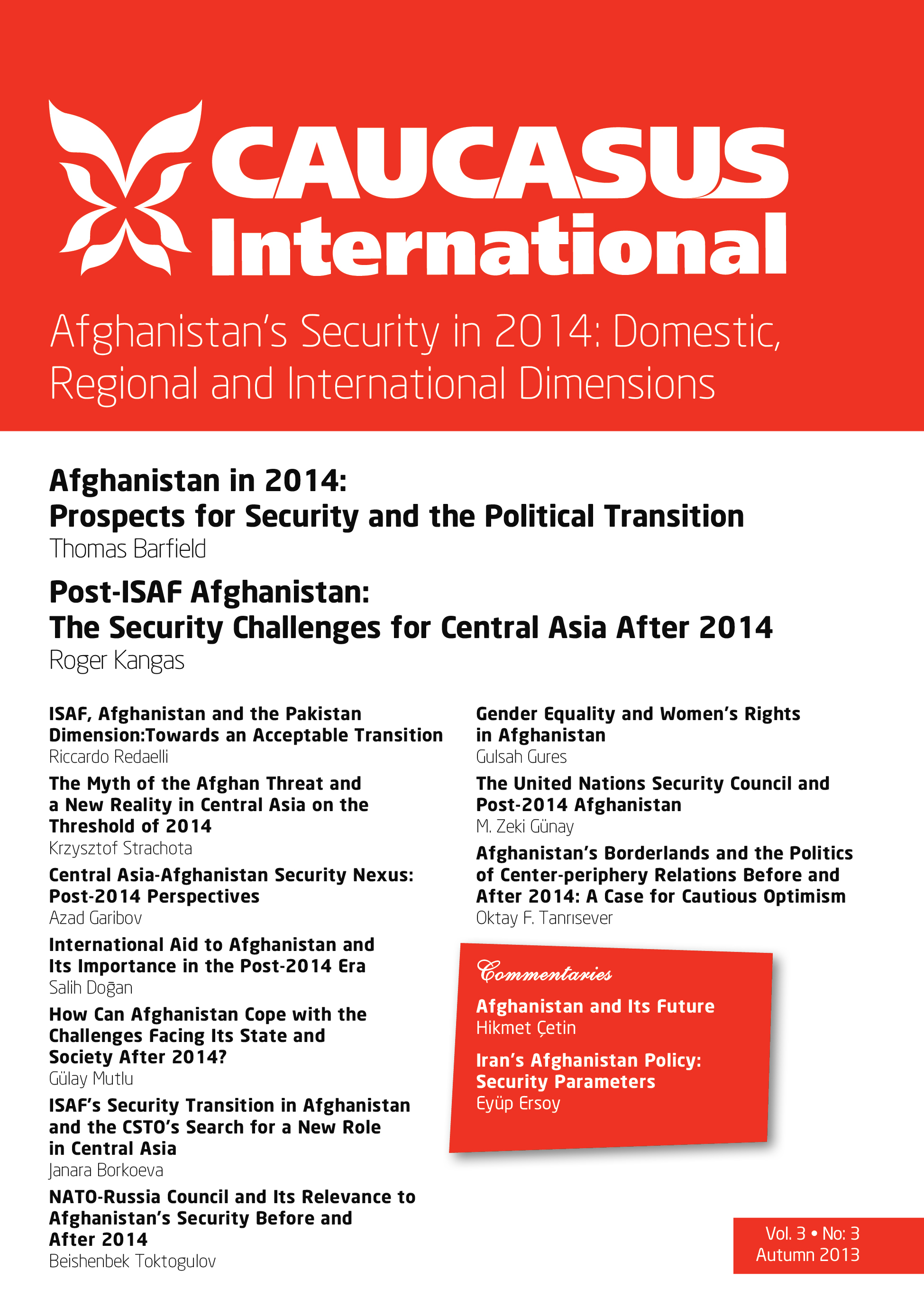Afghanistan in 2014: Prospects for Security and the Political Transition
The article examines the key transitions Afghanistan will experience in 2014, namely security and political transitions. In the scope of the changes in security structures, the paper underlines that NATO withdrawal generates concerns and fears among the local Afghan people about the return of the destructive instability, previously kept under control by NATO forces. Even those who are uncomfortable about the presence of foreign troops in their country are ambivalent about seeing the troops depart, fearing a return to civil war. The international community’s plans for meeting Afghanistan’s security needs in the post-2014 period focus only on building a larger army and police force; however the insurgent groups are still strong enough to challenge the central authority, and the central government might face a legitimacy crisis in the absence of an international presence, and as such the worries of the Afghan people hold true. On the political side, as the paper suggests, there is a concern about whether Hamid Karzai will actually leave office in 2014 and if he does, whether the election process will provide enough legitimacy for a new leader to govern effectively. This is because the history of Afghanistan suggests that the government in Kabul needs a stronger style of leadership and a more competent administrative structure than the one currently in place. The article concludes by arguing that it is unfortunate that these two critical changes will occur in the same year, as each on its own generates uncertainties that will challenge the stability of the Afghan state. Together they create a risk so great that the government - at least in its current form- may not be able survive.
Latest news
- 03/17/2020 Call for Submission: “Non-Alignment Movement and Its Perspective in International Affairs”. Deadline: 1 July 2020 2574 views
Popular articles
- 02/24/2020 The Role of Irredentism in Russia’s Foreign Policy 2491 views
- 02/24/2020 Construction of sub-national identity vis-à-vis parent state: Gagauz case in Moldova 2174 views
- 02/24/2020 The Conflict in Ukraine - The Geopolitics of Separatism and Divergent Identities (Commentary) 2030 views
- 02/24/2020 The Role of the Soviet Past in Contemporary Georgia 2004 views





